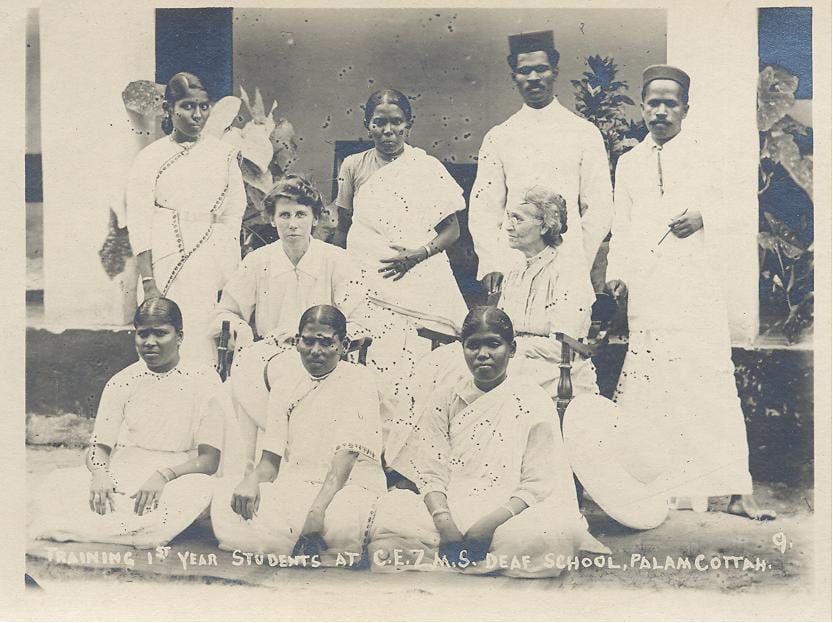“He is a magician who has managed to work miracles”* – the Beginnings of Deaf Education in India
By H Dominic W Stiles, on 15 March 2013
Babu Jamini Nath Banerji 1869-1921 founded a school for the deaf in Calcutta in the 1890s. Babu Girindranath Bhose, a father of Deaf children, had asked the government to get a teacher from England, however it was decided to send a teacher to England for training. In 1895 Banerji had 20 pupils. He said (probably to Dr. Roe) when he visited the Derby School (quoted in Our Deaf and Dumb 1895 Vol 2 (3) p.32),
“I made up my mind to do something for my country’s good, and it suddenly dawned upon me that I must teach the deaf and dumb.” He promptly, and with characteristic devotion, commenced to carry out his ideas at once. In the course of an able and eloquent speech he said, “If education does not open the mind and widen the heart, if it does not teach us the duties of life, and above all, if it does not bring us nearer to God, it is not worth our trouble.”
 In the brief article it says there were an estimated 200,000 deaf people in India at that time with less than 50 under instruction.
In the brief article it says there were an estimated 200,000 deaf people in India at that time with less than 50 under instruction.
There was at that time a school in Bombay, but after four months there Banerji, who had struggled with a copy of one of Arnold’s books given to him by Bhose, decided he needed to travel abroad to learn more. Banerji enrolled at the oralist Fitzroy Square Training College in London. Completing the course in a year, and not satisfied with that alone, he went on to Gallaudet with a scholarship from the U.S. government, before returning to India.
The obituary in Silent Worker says,
In 1905, when Sir Robert Carlyle was President of the School, a daily paper in Calcutta wrote a leader that the government should take up the school. Sir Robert asked Principal Banerji as to his opinion. He said it was a matter for the committee to decide, but so far as he was concerned he would oppose such a transfer in order to give the lie to the statement that Indians were incapable of taking any initiative.
References to various publications by Banerji are to be found on the University of Hamburg Sign Language website http://www.sign-lang.uni-hamburg.de/bibweb/miles/1750-1970.html
*The quotation is from Sir Robert Watson-Smyth in Silent Worker.
Around that time, the Church of England Zenana Missionary Society (CEZMS) (1880-1957) was starting to be active, and in the following years schools were opened elsewhere in the subcontinent. It did missionary and health related work particularly in India. the missionaries were women – ‘Zenana’ refers to the women’s portion of the house in India. Selwyn Oxley was involved to some extent, and there are some of their pamphlets etc., as well as some photographs in the archive collection. A trawl of the British Deaf Times and related publications will add additional articles on the Schools such as Palamcottah (see photograph below). The Hon. Secretary in 1931 was a Miss Pell, who gave the Monthly Broadcast Missionary Talk on the radio on 7th June 1931 (BDT 1931 p.101).
Deaf Work (C.E.Z.M.S.) in India & Ceylon. Historical Collection.
Education of the Deaf in India, Teacher of the Deaf Vol.33 p.169-75, 1935
 Close
Close


